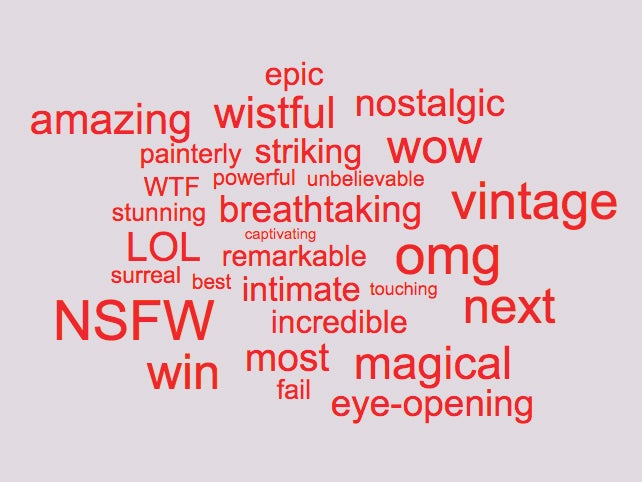You’ll Never Believe This Listicle of 12 Clickbait Buzzwords Photo Bloggers Need to Stop Using
Such listicle, very photography

The Humble Arts Foundation just published a list surveying some of our favorite photography writers, editors, and thinkers about the “12 Magical Buzzwords Photography Blog Writers Need to Stop Using.” Among those exploring the clickbait conventions are John Edwin Mason, Blake Andrews, and our very own Lindsay Comstock. Admittedly, we may have at one time or another succumbed to using one or two of these words in our own headlines, but increasing, we also can’t think of publications within the photo world, even among the most purportedly reputable, that haven’t.
On the one hand, these formulaic structures, dictated in large part by algorithms of social media and even mobile phone screen sizes, may undervalue the tremendous labor and original thought that photographers put into their projects. On the other, these conventions do actually lead to results, and hate-click or not, they get more eyes on to the work by helping audiences far wider than the usual photo enthusiasts better and faster identify with their stories. If this kind of packaging means that challenging, potentially impactful images are being consumed more widely, then perhaps it is a necessary evil. Until we fundamentally alter how we present and find visual data on the internet, the restrained, mysterious, decidedly original headline may have to be largely written off as a luxury of the bygone era of mass print production.
Anyway, without further ado, click here to see what words made the list and why—you wont believe what happens next.
The Humble Arts Foundation just published a list surveying some of our favorite photography writers, editors, and thinkers about the “12 Magical Buzzwords Photography Blog Writers Need to Stop Using.” Among those exploring the clickbait conventions are John Edwin Mason, Blake Andrews, and our very own Lindsay Comstock. Admittedly, we may have at one time or another succumbed to using one or two of these words in our own headlines, but increasing, we also can’t think of publications within the photo world, even among the most purportedly reputable, that haven’t.
On the one hand, these formulaic structures, dictated in large part by algorithms of social media and even mobile phone screen sizes, may undervalue the tremendous labor and original thought that photographers put into their projects. On the other, these conventions do actually lead to results, and hate-click or not, they get more eyes on to the work by helping audiences far wider than the usual photo enthusiasts better and faster identify with their stories. If this kind of packaging means that challenging, potentially impactful images are being consumed more widely, then perhaps it is a necessary evil. Until we fundamentally alter how we present and find visual data on the internet, the restrained, mysterious, decidedly original headline may have to be largely written off as a luxury of the bygone era of mass print production.
Anyway, without further ado, click here to see what words made the list and why—you wont believe what happens next.